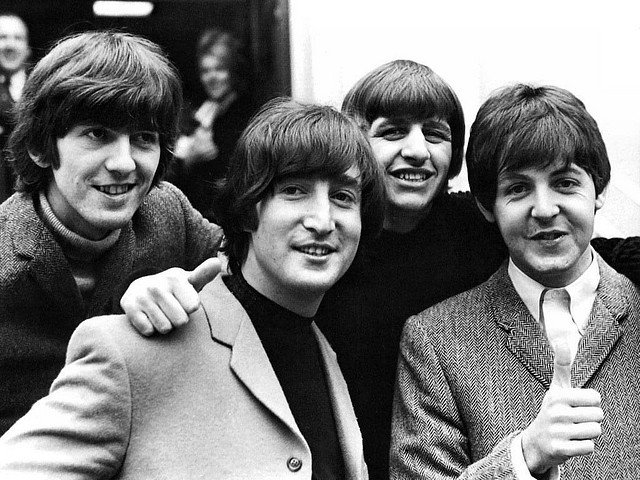The RIGHT Leadership Development Model

5 guiding principles to follow
In this day and age, leadership development is no longer a by-the-way conversation but a conversation that is addressed even at the most strategic level.
The million-dollar question that jumps at organisations over and over again is “how can we define the right leadership model?”
It is doubtful that we have a winner for now, but it is definitely possible to direct our energy and attempts to define a leadership development model.
Rather than using benign steps, let us look at some dynamic guiding principles that can help us in this quest.
Before we begin our attempt, this article makes the following three assumptions:
1. 'Right' would mean ethically correct, with socially acceptable values that while open to debate, will find the general public coming to a consensus that this leader is progressive rather than degenerative.
Hitler, for example, would not meet this assumption because even though he exerted significant influence and charisma, the genocide was against human rights and ultimately had a negative impact on society.
Thus, the attempt to define the right leadership development model is consciously ensuring we do not produce such leaders.
2. 'Right' is seen to differ across organisations even when there are similarities and differences in demographics.
While every organisation needs a leader, and these leaders may share commonalities, the journey of individual leaders are likely to differ and are organisationally-specific depending on various factors such as the organisation’s growth phase, industry needs, etc. Hence, defining the right leadership development model will produce more than one 'right' model.
3. “Right” is assumed to mean the 'best fit' for the particular organisation. Hence, the term will be used interchangeably.
Rather than going into a philosophical argument of whether the right thing is the best thing to do, this assumption allows the guiding principle to direct us towards a level plane where the right development model is also the best-fitted leadership development model, after having all possible factors consciously considered.
If we can agree with the above proposed assumptions, then the following guiding principles will be more sensible and valuable.
Incidentally, the right leadership development model can be created using the same Right acronym; Relationship, Intention, Growth, Holistic, Tailored.
1. Relationship
Relationship is probably not the first thing that comes to mind in a conversation on the best leadership development model.
Yet, good relationships are paramount indefining a leadership development model across the key phases of design, execution and evaluation.
To adopt an innovation strategy called co-creation, the right leadership development model is a result of collaborative design between the development provider (whether internal or external) with the organisation’s champions.
Without a good relationship, or the interest of building a relationship, the resulting leadership development model would likely be a misfit of needs, suggestions and wants rather than based upon a common purpose that leverages upon the best that each side can bring.
This form of relationship is also key in ensuring the success at execution stages as the organisation and development provider are engaged in constant communication to ensure the design is translated well and tinkering can happen proactively.
Not all aspects of a design would be similar when translated into tangible actions. Thus, a good relationship enables prompt response to any changes, and sustains momentum of the leadership development journey.
Even after the execution phase, a good relationship allows for stronger debrief and organisational learning in the evaluation phase with a focus on moving things better and forward rather than falling into a blame game of what did not go well.
Other relationships implicated in a leadership development journey are equally important when building this right model.
For example, a strong relationship between development provider and the candidate themselves helps them see through the entire journey especially if the development involves various one-off exposures with different people.
Even within the candidates themselves, good relationships are often the most basic takeaway in any leadership development model – almost a given in increasing their network.
This is an extremely important form of relationship as it forms the informal connective tissue that sustains the impact of the development long after it has formally subsided.
2. Intention
Intention forms the second guiding principle in building the right leadership development model.
Every stakeholder wants a development model that works but this intention needs to also be formalised by carrying out systematic analysis particularly in the design phase.
Some examples are the training needs analysis, future-oriented job analysis and appreciative inquiry.
Each of these techniques provide a different perspective to crystalise the intention of the leadership development model.
A training needs analysis tells us what is needed while appreciative inquiry tells us what has always worked.
It can also be drilled down to a more detailed level such as understanding intentions of participants in a leadership development journey (i.e. their aspiration).
Ultimately, understanding the intention will help an organisation discover whether the resource and energy invested into creating the right leadership development model is necessary at the current phase.
After all, development is never intended as an all-encompassing solution and building a learning organisation may sometimes require preceding effort in other areas of the organisation such as vision and strategy creation.
3. Growth
The third guiding principle is Growth particularly in relation to time. As a basis, the right leadership development model is always best seen as a trajectory of growth, as a journey rather than an end-in-all.
Knowing this helps reduce an over-the-top focus on bottom line i.e. return on investment.
Moreover, growth needs space. Organisations that are not prepared to accommodate the new aspirations and capabilities of candidates who have been through leadership development often find themselves with frustrated candidates who feel unappreciated.
Growth also takes time – we can accelerate learning but the refinement of this learning’s applications will consume time.
Time allows for mistakes and reflections which cement the leadership development which in turn justifies the need to design time into the right leadership development model. By doing that, we are essentially also buffering it against unnecessary reactiveness to the ever-changing external environment.
4. Holistic
Holistic is the next principle to explore in creating the right leadership development model. In particular, this guides us to understand the processes, techniques and perception of leadership.
For the most part, a holistic process would mean a systematic alignment across three general stages of developing a model: Design, Execution, Evaluation.
Often, the Execution phase is seen as the key goal; therefore Design and Evaluation often come in hindsight rather than a pre-emptive effort.
Without a holistic development process, we risk jeopardising the leadership development model as there are no educated hypotheses made in the Design phase, neither are there mechanisms to test these assumptions if a proper Evaluation is not built in.
Our perception of leadership and techniques to develop leaders directly correlate as the former informs us about the profile of leader we would like to develop using the model.
If we see leaders just as star people who bring organisations to greater heights, the choice of development methods within the model differ significantly than if we see leaders as humans who when developed, will exert influence across various facets of the human life including life outside of work.
In that sense, does our leadership development model’s techniques allow for this development to occur in different aspects of the leader’s life, including personal?
5. Tailored
Finally, is our leadership development model tailored? This final guiding principle essentially encompasses the four other guiding principles whether it means tailoring the way we explore Intentions, or the way we approach Relationships.
By tailoring and customising leadership development models to its unique landscape or ecosystem, we are enabling it to be translated into the organisation and make an impact.
For example, a company has described culture in the following manner; “Culture eats strategy for breakfast… leadership is just a snack”; emphasising the importance of culture in the translation of successful leadership development within an organisation.
Also, tailoring a leadership development model to an organisation involves combining both inside-out and outside-in perspectives.
To illustrate, the globalised world requires a particular type of leader (outside-in) yet the organisation needs to marry that external need with an internal capability such as the type of leader needed for its current growth phase (inside-out).
Understandably, this is no linear process; if anything, the five guiding principles seek to provide different directions to be considered in developing the right leadership development model that is both effective and sustainable for an organisation.
These principles do cover a large scope of how the right leadership development model can be created; that can allow it space to navigate and apply the principles that are appropriate for us to begin this development process.
So, if you imagine your organisation right now; imagine the leader you want to develop. How will these five areas look like in your leadership development model? (See Figure 1)
Related article: Leadership Model Case Study
Business
Tags: Emerging Leadership, Executing Leadership, Case Studies, Business Model





